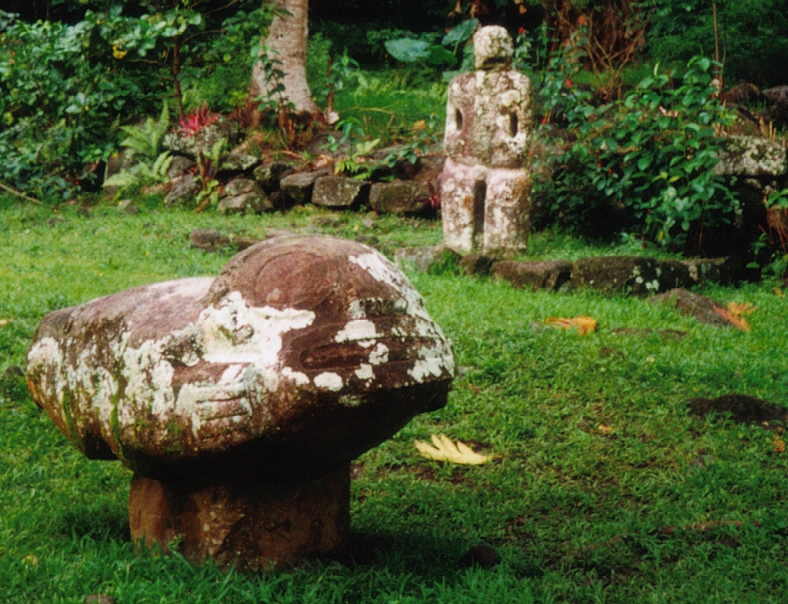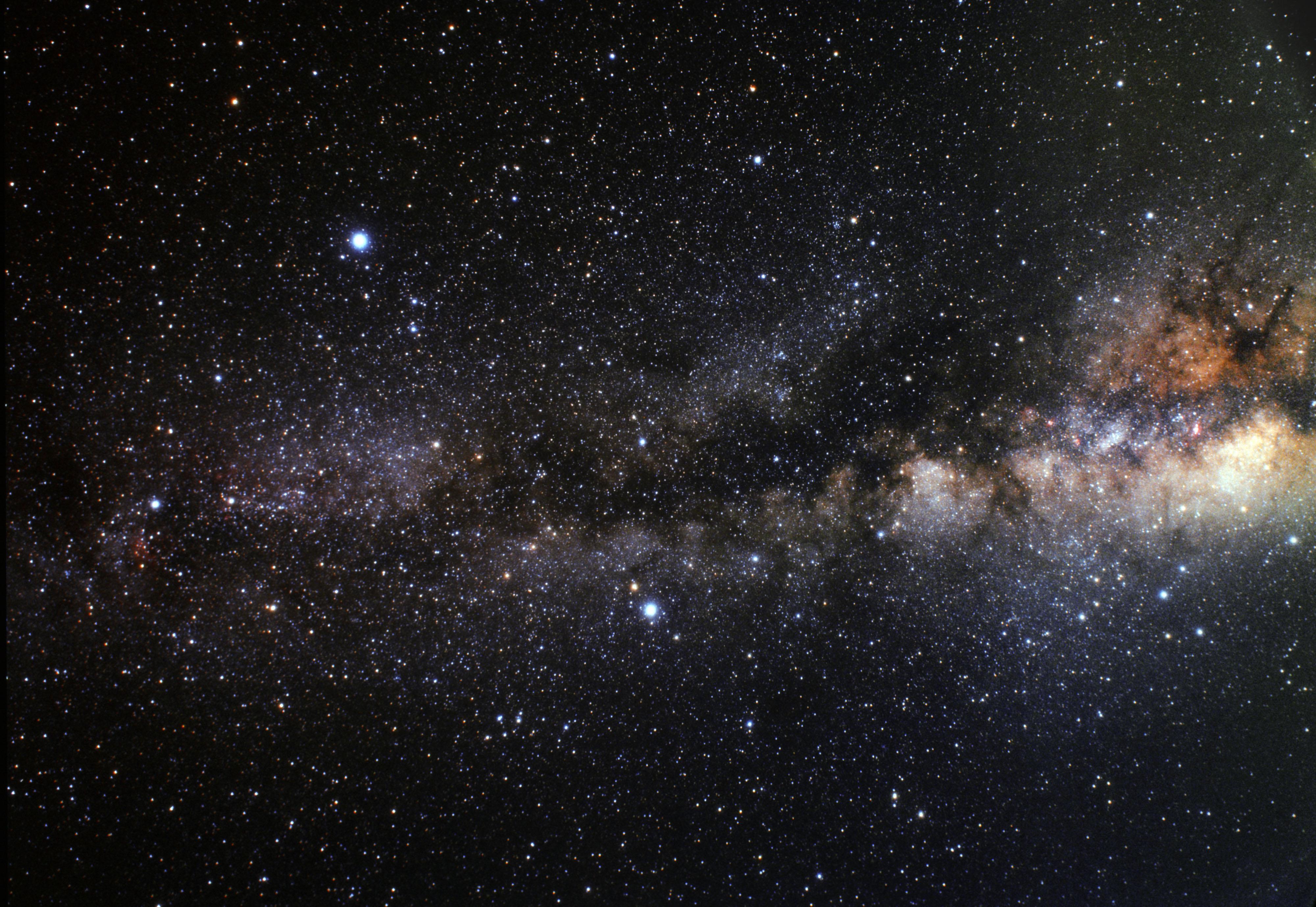|
Kiho-tumu
In the mythology of the Tuamotu archipelago, Kiho-tumu (or Kiho) represents the supreme god (Sykes and Kendall 2003:108). The Milky Way is said to be his 'sacred ocean' and the dark rift within the Milky Way is referred to as his sacred ship, called 'the Long Shark' (Beckwith 1970:236). On the other hand, research by anthropologist Kenneth Emory led him to doubt the reliability of Stimson's sources: These details concerning the principal informants for the esoteric cult of Kio or Kiho, coming to my attention, have made it more and more difficult for me to accept their accounts and esoteric versions of chants, unsupported by trustworthy confirmation. Both Bishop Paul Mazé and I have earnestly searched for corroboration and have not only failed to find any, but have come across so much reliable contrary evidence (now on file at the Bishop Museum) that we are left completely without faith in the cult. See also * Io Matua Kore Io Matua Kore is often understood as the supreme be ... [...More Info...] [...Related Items...] OR: [Wikipedia] [Google] [Baidu] |
Io Matua Kore
Io Matua Kore is often understood as the supreme being in Polynesian narrative, particularly of the Māori people. Io does seem to be present in the mythologies of other Polynesian islands including Hawai‘i, the Society Islands, and the Cook Islands. He, or somebody else with his name, appears as a great-grandson of Tiki, and a father of another Io-rangi in Moriori mythology. Controversy Io was first known generally with the publication in 1913 of Hoani Te Whatahoro Jury's book, translated by Percy Smith as ''The Lore of the Whāre-wananga''. The idea that the Io represented a pre-Christian understanding of "God" much like the Christian God would be propagated by Elsdon Best in his ''Maori Religion and Mythology.'' The Io tradition was initially rejected by scholars including prominent Māori scholar Te Rangi Hīroa (Peter Buck), who wrote, "The discovery of a supreme God named Io in New Zealand was a surprise to Māori and Pākehā alike." Buck believed that the Io tradit ... [...More Info...] [...Related Items...] OR: [Wikipedia] [Google] [Baidu] |
Polynesian Mythology
The Polynesian narrative or Polynesian mythology encompasses the oral traditions of the people of Polynesia (a grouping of Central and South Pacific Ocean island archipelagos in the Polynesian Triangle) together with those of the scattered cultures known as the Polynesian outliers. Polynesians speak languages that descend from a language reconstructed as Proto-Polynesian - probably spoken in the Tonga - Samoa area around 1000 BC. Description Prior to the 15th century AD, Polynesian peoples fanned out to the east, to the Cook Islands, and from there to other groups such as Tahiti and the Marquesas. Their descendants later discovered the islands from Tahiti to Rapa Nui, and later Hawai‘i and New Zealand. The latest research puts the settlement of New Zealand at about 1300 AD. The various Polynesian languages are all part of the Austronesian language family. Many are close enough in terms of vocabulary and grammar to permit communication between some other language speakers. ... [...More Info...] [...Related Items...] OR: [Wikipedia] [Google] [Baidu] |
Tuamotu
The Tuamotu Archipelago or the Tuamotu Islands (french: Îles Tuamotu, officially ) are a French Polynesian chain of just under 80 islands and atolls in the southern Pacific Ocean. They constitute the largest chain of atolls in the world, extending (from northwest to southeast) over an area roughly the size of Western Europe. Their combined land area is . This archipelago's major islands are Anaa, Fakarava, Hao and Makemo. The Tuamotus have approximately 16,000 inhabitants. The islands were initially settled by Polynesians, and modern Tuamotuans have inherited from them a shared culture and the Tuamotuan language. The Tuamotus are a French overseas collectivity. History The early history of the Tuamotu islands is generally unknown. Archaeological findings suggest that the western Tuamotus were settled from the Society Islands as early as 900 CE or as late as 1200 CE. DNA evidence suggests that they were settled about 1110 CE. On the islands of Rangiroa, Manihi and Mataiva, t ... [...More Info...] [...Related Items...] OR: [Wikipedia] [Google] [Baidu] |
Archipelago
An archipelago ( ), sometimes called an island group or island chain, is a chain, cluster, or collection of islands, or sometimes a sea containing a small number of scattered islands. Examples of archipelagos include: the Indonesian Archipelago, the Andaman and Nicobar Islands, the Lakshadweep Islands, the Galápagos Islands, the Japanese archipelago, the Philippine Archipelago, the Maldives, the Balearic Islands, The Bahamas, the Aegean Islands, the Hawaiian Islands, the Canary Islands, Malta, the Azores, the Canadian Arctic Archipelago, the British Isles, the islands of the Archipelago Sea, and Shetland. They are sometimes defined by political boundaries. For example, the Gulf archipelago off the northeastern Pacific coast forms part of a larger archipelago that geographically includes Washington state's San Juan Islands; while the Gulf archipelago and San Juan Islands are geographically related, they are not technically included in the same archipelago due to manmad ... [...More Info...] [...Related Items...] OR: [Wikipedia] [Google] [Baidu] |
Milky Way
The Milky Way is the galaxy that includes our Solar System, with the name describing the galaxy's appearance from Earth: a hazy band of light seen in the night sky formed from stars that cannot be individually distinguished by the naked eye. The term ''Milky Way'' is a translation of the Latin ', from the Greek ('), meaning "milky circle". From Earth, the Milky Way appears as a band because its disk-shaped structure is viewed from within. Galileo Galilei first resolved the band of light into individual stars with his telescope in 1610. Until the early 1920s, most astronomers thought that the Milky Way contained all the stars in the Universe. Following the 1920 Great Debate between the astronomers Harlow Shapley and Heber Curtis, observations by Edwin Hubble showed that the Milky Way is just one of many galaxies. The Milky Way is a barred spiral galaxy with an estimated D25 isophotal diameter of , but only about 1,000 light years thick at the spiral arms (more at the bulg ... [...More Info...] [...Related Items...] OR: [Wikipedia] [Google] [Baidu] |
Ocean
The ocean (also the sea or the world ocean) is the body of salt water that covers approximately 70.8% of the surface of Earth and contains 97% of Earth's water. An ocean can also refer to any of the large bodies of water into which the world ocean is conventionally divided."Ocean." ''Merriam-Webster.com Dictionary'', Merriam-Webster, [...More Info...] [...Related Items...] OR: [Wikipedia] [Google] [Baidu] |
Great Rift (astronomy)
In astronomy, the Great Rift (sometimes called the Dark Rift or less commonly the Dark River) is a dust lane, dark band caused by interstellar clouds of cosmic dust that significantly obscure (extinction (astronomy), extinguish) the Galactic Center, center and most radial sectors of the Milky Way galaxy from Earth's perspective. In dark, clear night sky, night skies, the rift appears as clear as the bright galactic bulge, bulge of stars around the Galactic Center does to the naked eye or binoculars. The rift is largely between the Solar System (which is close to the inner edge of the Orion Arm) and the next arm, inward, the Sagittarius Arm. The clouds are an obstruction to millions of the galaxy's stars detected at visible spectrum, visible wavelengths, which compose a bright hazy band appearing angular diameter, 30° wide and arching through the night sky. The clouds within our radial sector of the galaxy span about from Earth. The clouds are estimated to contain about 1 millio ... [...More Info...] [...Related Items...] OR: [Wikipedia] [Google] [Baidu] |
Ship
A ship is a large watercraft that travels the world's oceans and other sufficiently deep waterways, carrying cargo or passengers, or in support of specialized missions, such as defense, research, and fishing. Ships are generally distinguished from boats, based on size, shape, load capacity, and purpose. Ships have supported exploration, trade, warfare, migration, colonization, and science. After the 15th century, new crops that had come from and to the Americas via the European seafarers significantly contributed to world population growth. Ship transport is responsible for the largest portion of world commerce. The word ''ship'' has meant, depending on the era and the context, either just a large vessel or specifically a ship-rigged sailing ship with three or more masts, each of which is square-rigged. As of 2016, there were more than 49,000 merchant ships, totaling almost 1.8 billion dead weight tons. Of these 28% were oil tankers, 43% were bulk carriers, and ... [...More Info...] [...Related Items...] OR: [Wikipedia] [Google] [Baidu] |
Shark
Sharks are a group of elasmobranch fish characterized by a cartilaginous skeleton, five to seven gill slits on the sides of the head, and pectoral fins that are not fused to the head. Modern sharks are classified within the clade Selachimorpha (or Selachii) and are the sister group to the rays. However, the term "shark" has also been used to refer to all extinct members of Chondrichthyes with a shark-like morphology, such as hybodonts and xenacanths. The oldest modern sharks are known from the Early Jurassic. They range in size from the small dwarf lanternshark (''Etmopterus perryi''), a deep sea species that is only in length, to the whale shark (''Rhincodon typus''), the largest fish in the world, which reaches approximately in length. Sharks are found in all seas and are common to depths up to . They generally do not live in freshwater, although there are a few known exceptions, such as the bull shark and the river shark, which can be found in both seawater and fresh ... [...More Info...] [...Related Items...] OR: [Wikipedia] [Google] [Baidu] |
Kenneth Emory
Kenneth Pike Emory (November 23, 1897 – January 2, 1992) was an American anthropologist who played a key role in shaping modern anthropology in Oceania. In the tradition of A. L. Kroeber and other pioneering anthropologists who trained him, Emory's works span all four major fields of anthropology: archaeology, physical anthropology, ethnography, and linguistics. With fellow scientists Gerrit P. Wilder, Honolulu botanist, and Mrs. Wilder, historian; Dr. Armstrong Sperry and Dr. Stanley Ball, he was part of the Bishop Museum scientific research party who explored the South Pacific on the schooner Kaimiloa. Biography Kenneth Pike Emory was born November 23, 1897 in Fitchburg, Massachusetts. He moved to Hawaii when he was two and grew up there, traveling first to Dartmouth and then continued his education afterward at Harvard then received his PhD from Yale. While he was a high-school student, several archaeological digs in the Honolulu area piqued his interest in Polynesian ... [...More Info...] [...Related Items...] OR: [Wikipedia] [Google] [Baidu] |
Tuamotu Deities
The Tuamotu Archipelago or the Tuamotu Islands (french: Îles Tuamotu, officially ) are a French Polynesian chain of just under 80 islands and atolls in the southern Pacific Ocean. They constitute the largest chain of atolls in the world, extending (from northwest to southeast) over an area roughly the size of Western Europe. Their combined land area is . This archipelago's major islands are Anaa, Fakarava, Hao and Makemo. The Tuamotus have approximately 16,000 inhabitants. The islands were initially settled by Polynesians, and modern Tuamotuans have inherited from them a shared culture and the Tuamotuan language. The Tuamotus are a French overseas collectivity. History The early history of the Tuamotu islands is generally unknown. Archaeological findings suggest that the western Tuamotus were settled from the Society Islands as early as 900 CE or as late as 1200 CE. DNA evidence suggests that they were settled about 1110 CE. On the islands of Rangiroa, Manihi and Mataiva, th ... [...More Info...] [...Related Items...] OR: [Wikipedia] [Google] [Baidu] |




